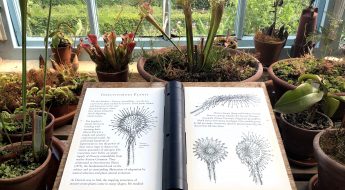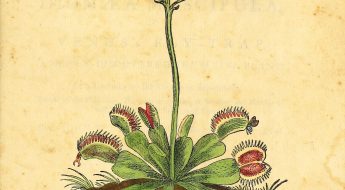My Summer Experience as the Biodiversity Heritage Library’s Digital Content Intern
My first experience with the Biodiversity Heritage Library (BHL) occurred during my search for information on a certain gastropod, Tegula patagonica, for a biological research paper on the relationship between the abundance of marine gastropod shells and varying beach substrates in coastal Patagonia. I had just returned to Cornell University from field research in Bahía Bustamante, a small coastal town in Argentina, and I needed to begin compiling my research into a paper. However, there was one small catch – because Bahía Bustamante had no reliable internet connection, I had been unable to research the shells I was using for my project while in the field. Therefore, upon returning to Cornell, I had to first identify every shell I had used to the species level, and then research each species before I could even begin to write my paper.

A selection of shells I had to identify. I took photographs like this in the field in order to help me identify gastropod species when I returned home.
The BHL proved the most useful resource in my search for information on Patagonian gastropods. By typing in Tegula patagonica alone, I found results not only in English and Spanish (which I could read and use for my paper), but also various other languages such as German, French, and Portuguese. Furthermore, I did not even have to leave my room to access these materials.
As a student studying History, Asian Studies, and Biology, I have found the ability to access digitized materials such as those offered by the BHL invaluable to any research project. Even though I have access to the Cornell Libraries while studying at university, when I return to my home in rural Colorado over the summer, I heavily rely on online resources. Therefore, I became interested in the process of the digitization of resources, and began searching for opportunities to involve myself in the process of digitization and making materials readily accessible online.
When I discovered the BHL offered a virtual digital content internship, I immediately decided to apply in order to learn more about the curation of and the considerations for maintaining an online library. Even though I had no background in library science, I had become familiar with the idea of metadata collection through my work in photography, and believed I would be able to apply that previous experience to the process of making materials accessible through the BHL. Once accepted for the internship, I learned to use a system called Macaw to add metadata to items and eventually upload them to the Internet Archive, where they could be accessed through the BHL website. I am very grateful to have had Bianca Crowley, the Digital Collections Manager for the BHL, to teach me and help me during the internship; no matter how many questions I had, she always had the answers!
Over the course of my internship, I worked on items ranging from geological publications in Hungarian, to the German-language “Bonn zoological Bulletin,” to ornithological articles on birds in Wales and Kenya, to articles on the botany of the Great Lakes region. However, the items I worked on do not even scratch the surface of the diverse languages, time periods, subject matters, and authors present in the BHL. I am happy to have made even a small contribution to the ever-growing collections available through the BHL. [Note: Stephanie contributed over 10,000 pages — thank you!]
Had this internship not been a virtual internship, I am certain I would have been unable to participate. For the first half of the summer, I participated in a program with Cornell in which I lived in Zen monasteries in Japan for a few weeks. I am currently learning Japanese and studying Asian Studies and History; thus, I could not miss this opportunity to go to Japan, practice my Japanese, and experience the day-to-day life of living in a Zen monastery. After that program, I stayed in Japan for another couple of weeks, making it impossible for me to participate in any internship in the United States where I had to be physically present. Luckily, I did not have to worry about my physical location in order to do a virtual internship with the BHL. For the first part of the internship, I worked from Japan in three separate locations: Hakone, Nikko, and Tokyo. I uploaded PDFs, added metadata, and sent off items for uploading. When I returned home to Colorado, I was also able to seamlessly continue my work.
Therefore, I am very grateful that the BHL offers the opportunity to learn and participate as a virtual intern. I believe the decision to have the internship be virtual gives people like me the opportunity to participate in programs they otherwise would be unable to engage in. This internship introduced me to the world of library science, and has made me more interested than ever in the ongoing process of digitization and the breakthroughs in the accessibility of materials online.







Leave a Comment